Posted on January 15, 2019
Life Bytes: Ultima 9 Edition
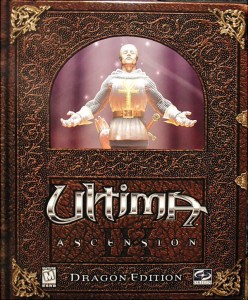 -Excerpt from “Life Bytes: Growing Up Geek” (buy the book!)
-Excerpt from “Life Bytes: Growing Up Geek” (buy the book!)
Every now and then, a game comes along that’s so amazing, it changes everything. Ultima IX was not one of those games. Except that it kinda was.
People hate this game. Like, way more than should be legal. And I’ve never understood why. It’s not a bad game, and it’s definitely nowhere near the “worst RPG ever” as some have described it. Nor is it a betrayal, as Noah Antwiler (in)famously proclaimed it to be. It’s just what it is: a good game wrapped in impossible expectations, with a side of french fried bad timing.
First up, the hate. It’s actually been building over the years, like an angry little snowball rolling down the side of a mountain in a Saturday morning cartoon. However, contrary to what people want to believe now, it wasn’t actually hated then. Not really. Sure, it wasn’t given glowing reviews, but it wasn’t universally loathed in the legendary way it has become. It was received with, at worst, mediocre reviews.
The biggest gripe fans had way back in 1999 when the game came out had to do with performance and compatibility issues more than anything to do with the game itself. People didn’t start ripping apart the plot and yelling about things like, “What’s a paladin?” until much later, after YouTube happened and taking giant dumps on other people’s hard work became a subscriber-fetching trend.
So let’s roll the clocks back to November 24, 1999 – which is the day Wikipedia tells me Ultima IX came out, because I’m too old and senile to remember it. But whatever day it came out is the day that I had it. And the Dragon Edition, no less; I still have my tarot cards to prove it!
Imagine me driving back to my apartment, giddy with excitement to play the latest installment of a game series that meant a lot to me, growing up. It’s something I played with my Dad, and it forms some of my earliest memories. We bonded over stopping Minax. We learned about each other by discussing Ultima IV. We yelled in solidarity when we played Ultima VII and just wanted EVERYBODY TO SIT THE HELL DOWN ALREADY in the damn wagon. It was a thing my Dad and I shared that kept me from ever entering that horrible father-hating teenage rebellion stage, and I will always – always – be thankful to Richard Garriott for giving us that.
But anyway, it’s not 1985, so enough with my Dad-memories. It’s 1999, and I’ve just arrived home and installed the game. I load it up and…it probably crashed. Because that’s what Ultima IX did when it was released. It crashed a lot. But so did every Origin game, which people tend to forget. Games from Origin were always demanding, always punishing to older systems, and always, always buggy. But this was 1999, and the Internet had happened, which made getting patches a whole lot faster and easier than the BBS days, and the U9 team was quick with early patching.
I didn’t have a lot of the same problems other people had with the game, because I had a 3DFX card in my system. However, a lot of people didn’t, at this point. Ultima IX had the misfortune of coming out during the awkward transition period between Glide and Direct3D. In the early days of 3D PC gaming, 3DFX was king – and everything used Glide. OpenGL and D3D cards weren’t very big in those early days, and the ones that did exist were usually slow and clumsy things when compared with the screaming speed of dual Voodoo 2s.
But U9 hit when things were beginning to change, after Nvidia came on the scene with their TNT line of graphics cards. They were getting popular, and Origin didn’t see it coming. Or, if they did, they didn’t have time to adjust.
But before that, the very first iteration of U9 didn’t even take 3DFX cards into account, as it was entirely software-rendered. But once the rise of graphics accelerators happened, they knew that they had to get on board, otherwise their game would be behind the curve. So they scrapped the engine and wrote a new one – and, well, this story has been famously told and retold to the point that most every gamer knows what happened by heart.
In short: EA moved the U9 dev team to Ultima Online, then back to U9 when it was done, after which they slapped it with a restrictive budget and impossible deadline. And the rest is history.
Or is it?
One commonly held belief is that Ultima IX was always intended to be the last Ultima, at least by the time development started on the third and final iteration of the game. It turns out, though, that’s not entirely true.
When I asked Richard Garriott about this over on Twitter, he had this to say:
“That was never intended to be the last Ultima! It was only the end of the trilogy of trilogies. Ultima ended with my departure.”
This is an important point to consider when remembering Ultima IX, because the one thing a lot of people seem to have developed a problem with (over time) is its story. Specifically, with how it basically saddles the Avatar with amnesia regarding the events of the previous games, along with breaking series canon in numerous ways. But more on that in a minute. First, we need to get back to me playing U9 back in good old 1999.
I loved it. I installed the game, I patched the game, I tweaked my machine until it ran the game as smoothly as it was ever going to, and I played the game. AND I LOVED IT.
Seeing Britannia come to life in 3D for the first time (outside of the Underworld games) was a revelation. Sure, sacrifices had to be made to render the world in all three of the glorious dimensions, but I didn’t mind that Britain was suddenly a tiny hamlet, or that you could see the skybox inside Lord British’s throne room because the view distance was so short. I was a lifelong gamer. I understood the nature of compromise when it came getting the technology to do what you wanted it to do.
And those graphics? They hold up. Even today, they’re still pretty to look at, and more detailed than anything else out there at the time. Britannia wasn’t just a bunch of polygons on a tiny worldmap. It was alive with fluttering birds and skittering insects. There were trees and foliage. Things in caves went drip. It was entirely immersive, despite the limitations of the engine.
What else was doing what Ultima IX did in 1999? Nothing, that’s what.
Sure, Quake hit in ’96, and it was fast and looked great, but it wasn’t a very richly detailed world. Unreal looked even better than Quake – and it had some life in it, with waterfalls and insects buzzing around, but it was still a nailed-down shooter. The geometry was a set to run around in, not a world to be explored.
But Ultima IX was filled with little details like the sound of footfalls being attached to world textures so that when you ran over sand, it sounded like sand, and when you ran over wood or stone, it sounded like wood or stone. That was new back then. People forget.
There were also no loading screens. None. Once you were in the world, you stayed in the world. You didn’t open a door to watch a loading screen hit you with a separate Tavern Instance. You just opened the door and walked in. Same with dungeons. An open world with no loading screens. Nothing else was doing that in 1999. People forget.
And about those dungeons: they were great! Even the annoying ones (I’m looking at you, Hythloth) were detailed and intricate and fun. The closest comparison one could make with the complexity of Ultima IX’s dungeons would be along the lines of the Tomb Raider series. Of course, the Avatar wasn’t as agile as Lara Croft, but the puzzles, the length, the immersion was all there – along with the open world above ground, and the NPCs, and the dialog trees, and the overall plot, and the multiple locations. Everything. In nineteen freaking ninety nine.
PEOPLE FORGET.
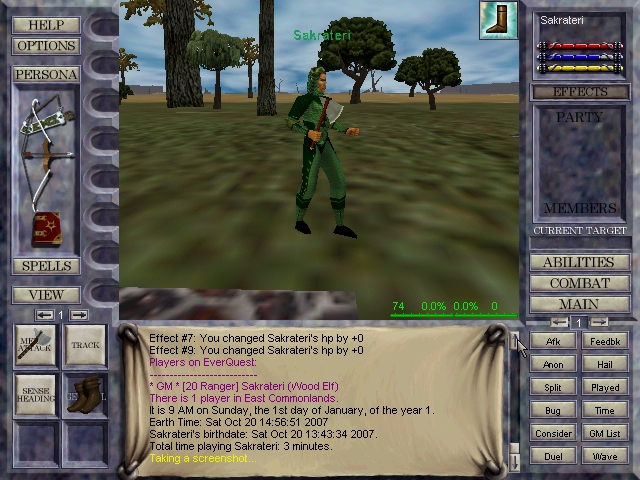
Also released in 1999, EverQuest was the closest anything came to doing what Ultima 9 did. Look at that ground texture. JUST LOOK AT IT.
Once the technical hurdles had been overcome with the final patches from Origin, people who wanted to dislike the game – or who were still feeling burned by its unfinished nature at release – moved on from performance issues to gameplay and story problems. Which is where Noah Antwiler comes in.
Now, I don’t want to rag on the guy. He looks like he works hard on his YouTube videos and such, and seems like a nice enough fellow – and most of his Ultima series retrospective is a lot of fun to watch. He clearly loves the series, and poking fun at its varied gooferies is all in good fun. Until, that is, he gets to Ultima 9.
The dude hated Ultima 9 so much he devoted three videos to trashing it for a total runtime longer than most feature-length movies. And most of his complaints stem from the story, and from his sense of betrayal at the hands of an uncaring developer. Or, rather, publisher. He blames EA.
And so do I. So does everyone. Ultima IX without Electronic Arts would’ve undoubtedly been one of those amazing games I mentioned at the beginning of this post, just like every Ultima before 8 was one of those amazing games that changed everything. Nobody likes EA. I get that. We all get that.
But…it’s not entirely EA’s fault.
Nor is anyone to blame for things that aren’t really problems, to begin with.
Yes, Ultima 9 severely retconned the previous fiction.
Yes, Ultima 9 basically gave the Avatar amnesia.
Yes, Ultima 9 catered more to new players than it did to returning players.
AND NONE OF THIS WAS BAD.
The landscape of gaming was changing dramatically in 1999. Not only had 3D taken a firm hold of the future, but the entire industry was changing. The era of the “hardcore” gamer was ending, and gaming was transitioning into something more mainstream. Naturally, the hardcore gamers resented this – just look at the hate something like Deus Ex 2 received due to how it was “dumbed down” and “console-ified” to see it. (Note to self: Write something about how DX2 also didn’t suck.)
The hardcore market was also shrinking. People tend to get less “hardcore” about anything as they get older, and other demands for their time start taking priority over gaming. Careers, family, children, mortgages, student loans, etc… Things add up, and people start leaving the hobby, or at least abandoning the “hardcore” games for titles that are easier to slip into and back out of again after the baby monitor goes off and you’ve got to get a crying infant back to sleep. It happens.
This sword was especially sharp for something like Ultima, which not only needed to attract new players, but somehow still please the returning ones. Which brings me around to what I said I’d get to in a minute earlier: that Ultima IX was never intended to be the last Ultima.
It’s a popular sentiment now, that EA always knew Ultima IX was going to be the last single-player Ultima game. It’s become accepted as just how it was, and I think that idea is partly behind some of the hardcore gamers’ hate for the game. Why cater to new players, after all, if you’re ending the series? Why “dumb down” the game for the fans, just so you can attract new players to a series that won’t have another installment?
And I totally get that. I’d probably be angry, too, if that were the case. But, as Richard said, Ultima IX was not always meant to be the end to the series – just the final installment of the third trilogy. The series didn’t end until he left, regardless of what EA might’ve had in mind.
So, yes. At the time it was being developed, Ultima IX had to adapt to the new gaming landscape. It had to bring in new players, and it had to go easy on returning players who might not have memorized every last little detail and event that happened over the course of a series that had been running continuously for the past EIGHTEEN YEARS.
A lot of Ultima fans in 1999 who had come on board with Ultima VI or VII probably weren’t even alive when Ultima 1 came out. Hell, even a 15 year old kid loading up Ultima IX for the first time would’ve only been 7 or 8 years old when the start of the Guardian trilogy – Ultima VII – was released. How much detail could you remember at 15 from when you were only 7? Probably not very much.
Which is why Ultima 9 needed to do something for everyone who wasn’t a member of the hardcore superfans club. In an era before the concept of rebooting a franchise ever occurred to anyone, Ultima 9 had to straddle the line between introduction and continuation, in a sort of quasi-reboot dance that a lot of players have since come to look back on with disdain.
Which, I think, is faulting the game for something beyond its control. Sure, it wasn’t handled as adeptly as we’ve come to expect from more recent attempts at doing the same thing (the Marvel cinematic universe comes to mind), but it was charting new territory. Again.
Because that’s what Ultima did. With every new entry in the series, it did something new. Most of the time, it worked. Ultima IV was a bombshell that showed you could have an engaging RPG without a Slay The Foozle plot. Ultimas V and VI heaped pounds of ambiguity onto the virtuous narrative, and gave the series more and more nuance. Ultima VII poked the religion bear with a stick. And each new game featured new tech. Each and every one.
Other times – *cough* Ultima VIII *cough* – they didn’t quite hit the mark. But for every one U8 (or, I admit, the horribly misguided and woefully executed romance subplot of U9), I can show you 7.5 other Ultima games that nailed it, along with two others that took the adventure to the Underworld and did things no one had ever seen before.
That’s a pretty good track record, and Ultima IX is somewhere closer to the Good side of that number line than the Bad side. Yes, it’s closer to U8 – but only by way of it not being Ultima 4 or 7. It’s less good by comparison, but it is in no way bad.
In fact, it’s even improved with age. The graphics really do hold up, and the GOG.com version is stable, with higher framerates, resolutions, and view distances than were ever possible back in 1999. You should really check it out.
I know I’ve been having fun with it. I think you will, too.
So, go on.
Try it.
Oh, and just in case I still haven’t sold you on Ultima IX, and you’re still longing for a return to those Elysian days of classic Ultima: Don’t worry. Richard has you covered, with Shroud of the Avatar:
“I hope SotA is a modernized best of: Ultima IV Story focus on Virtues, Ultima VII world sim, UO deep roles for emergent behavior.”
YOU ARE WELCOME.
-Excerpt from “Life Bytes: Growing Up Geek” (buy the book!)
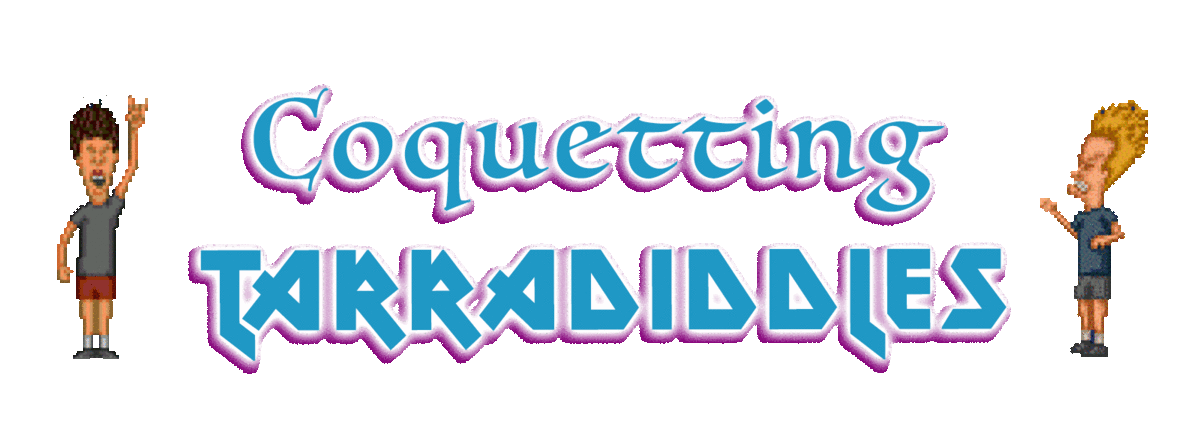
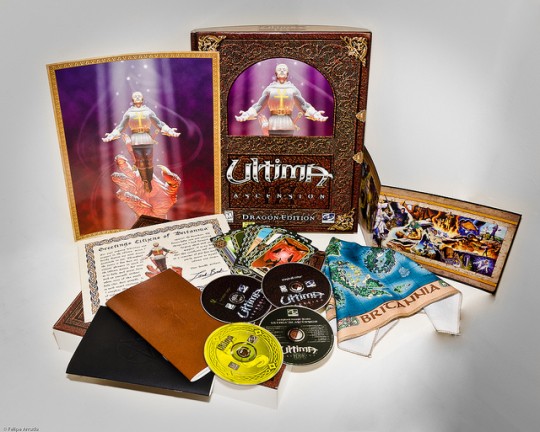

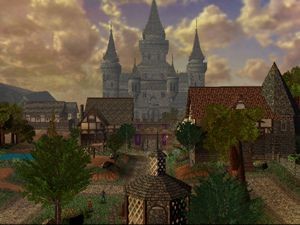

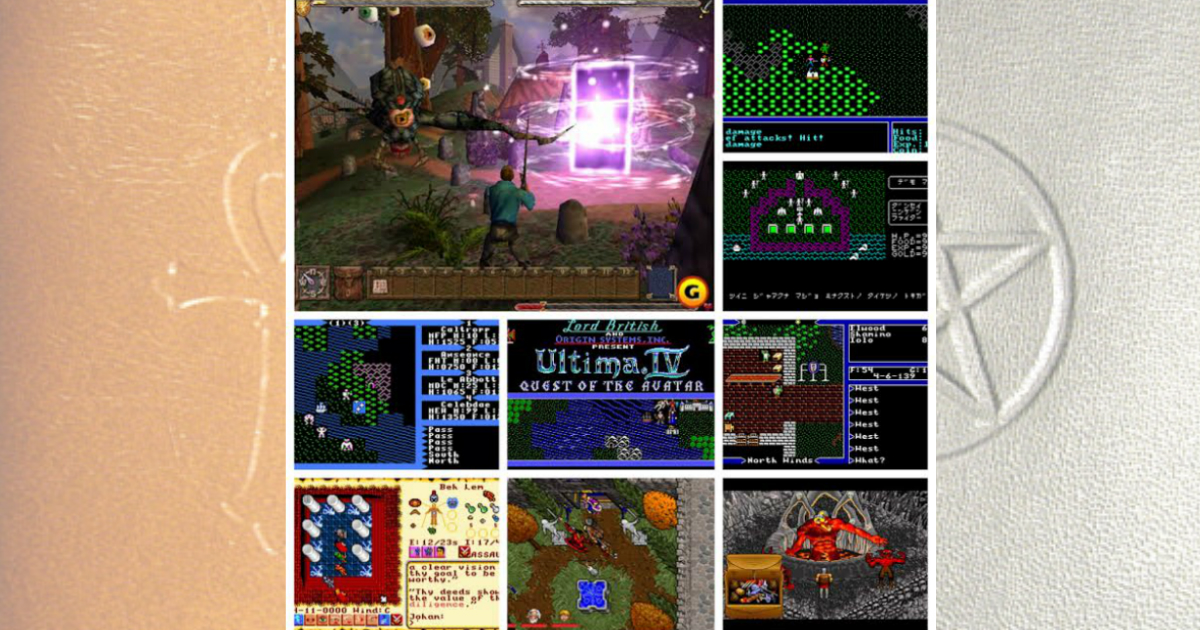
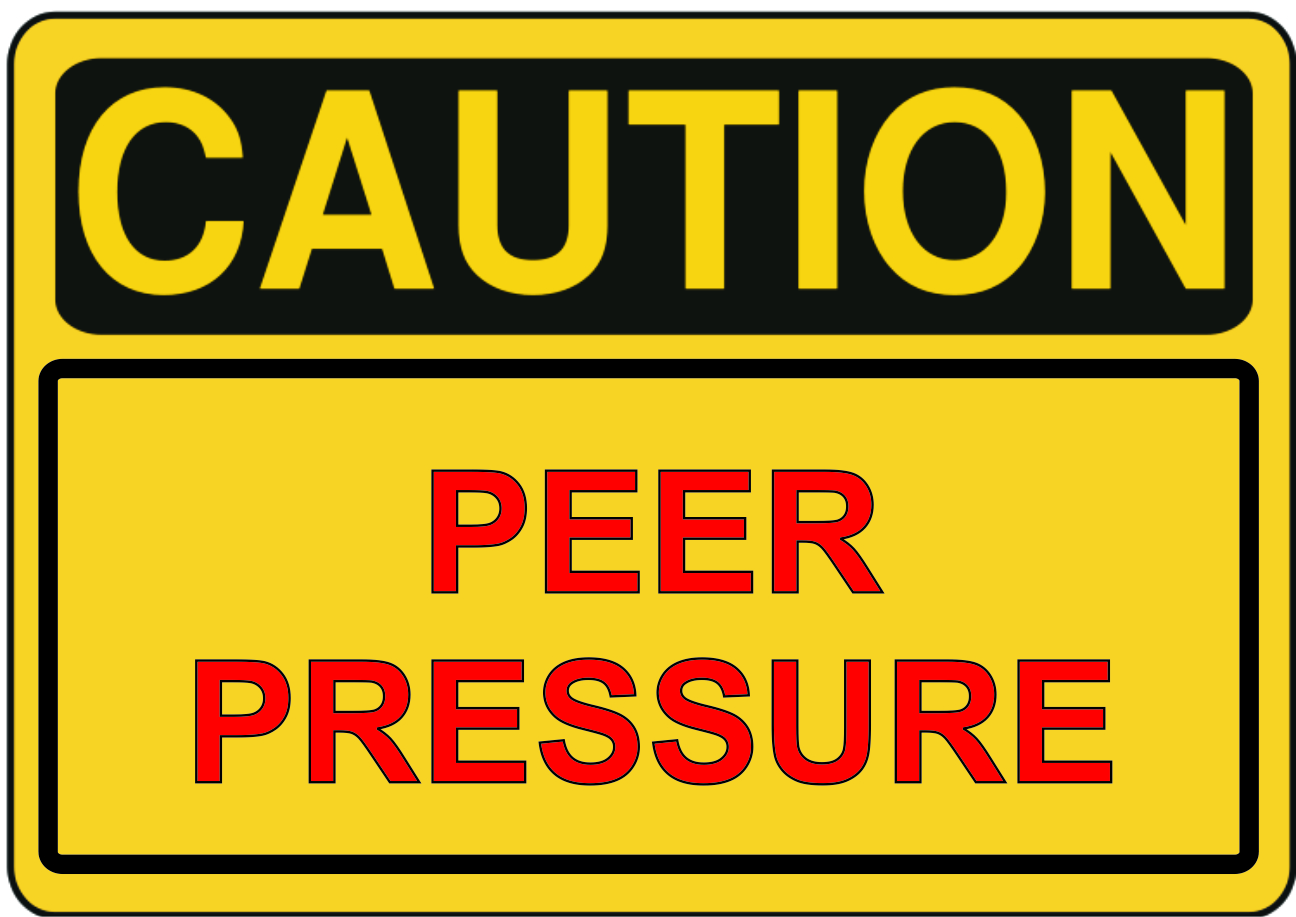
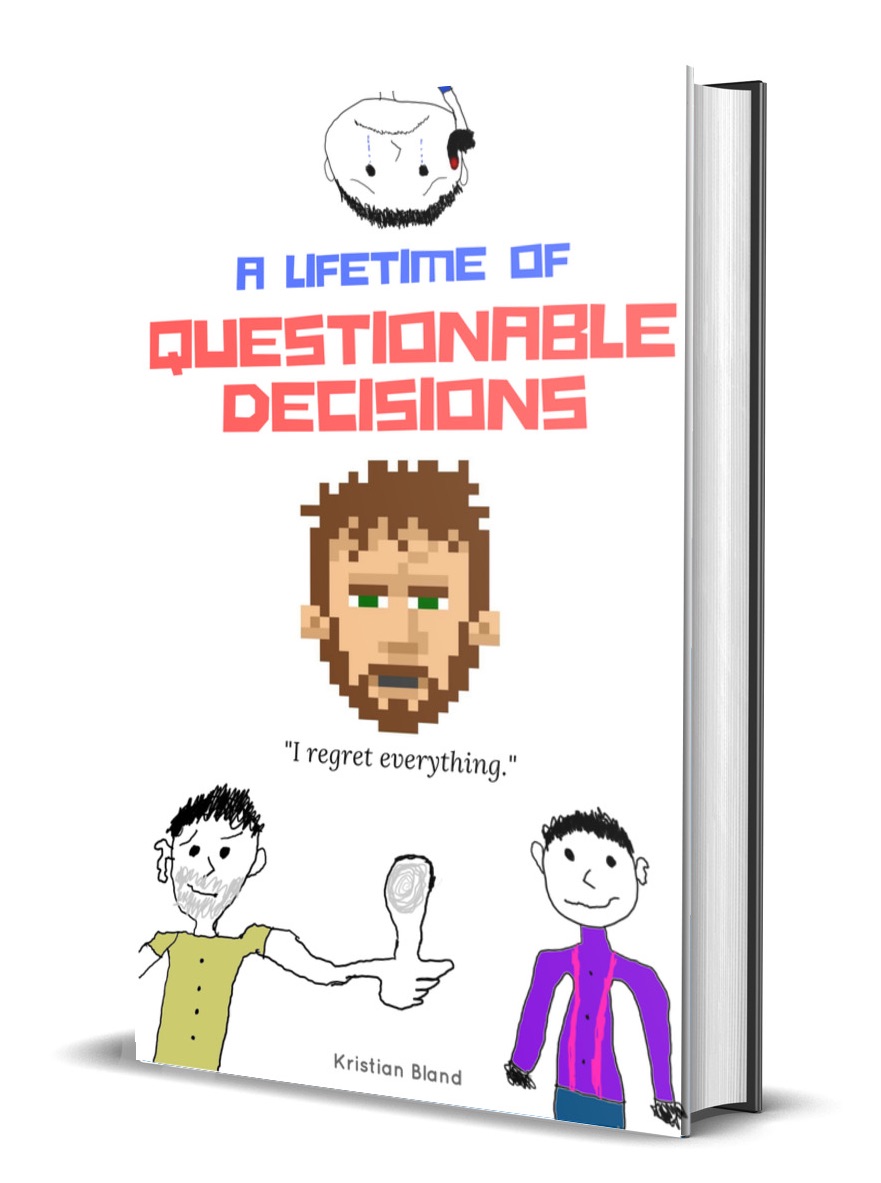




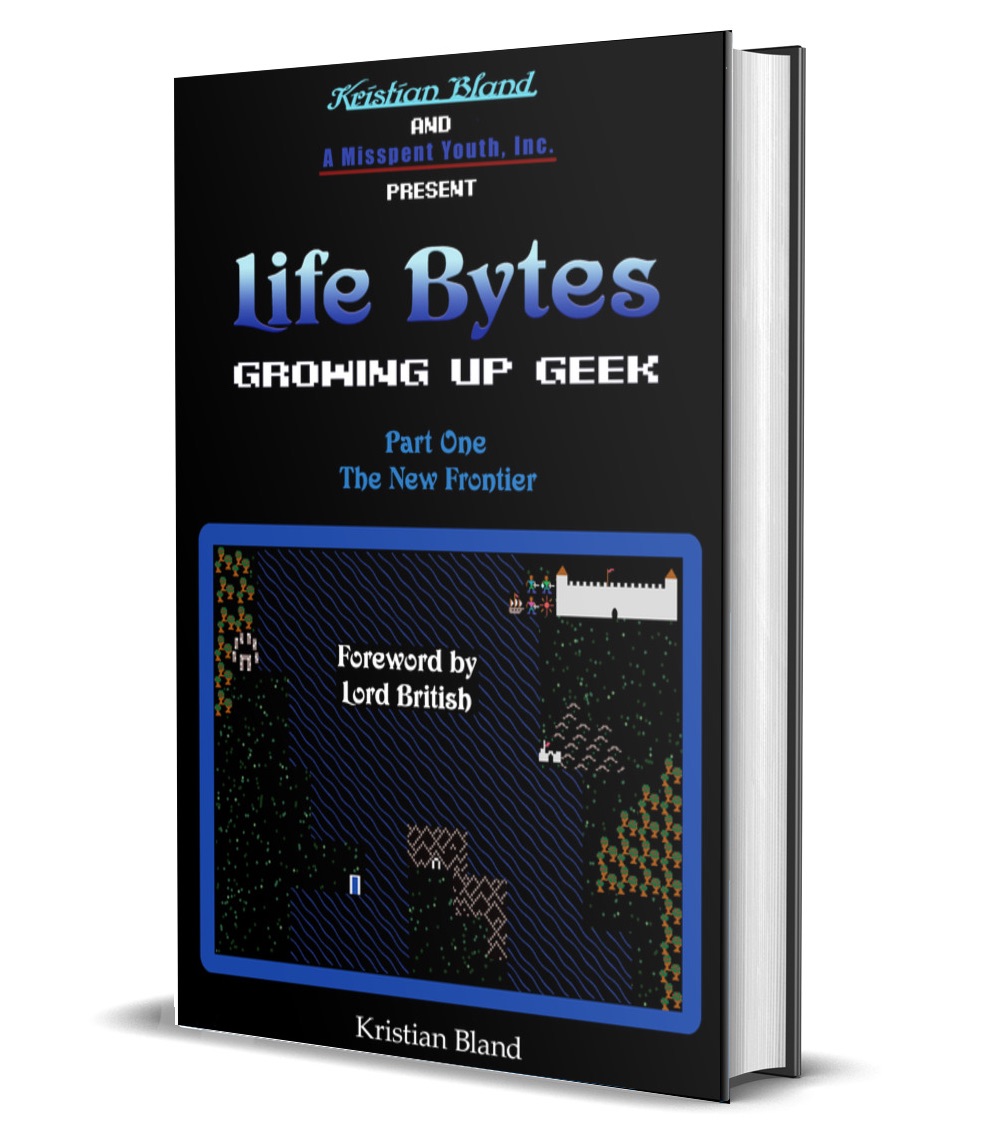
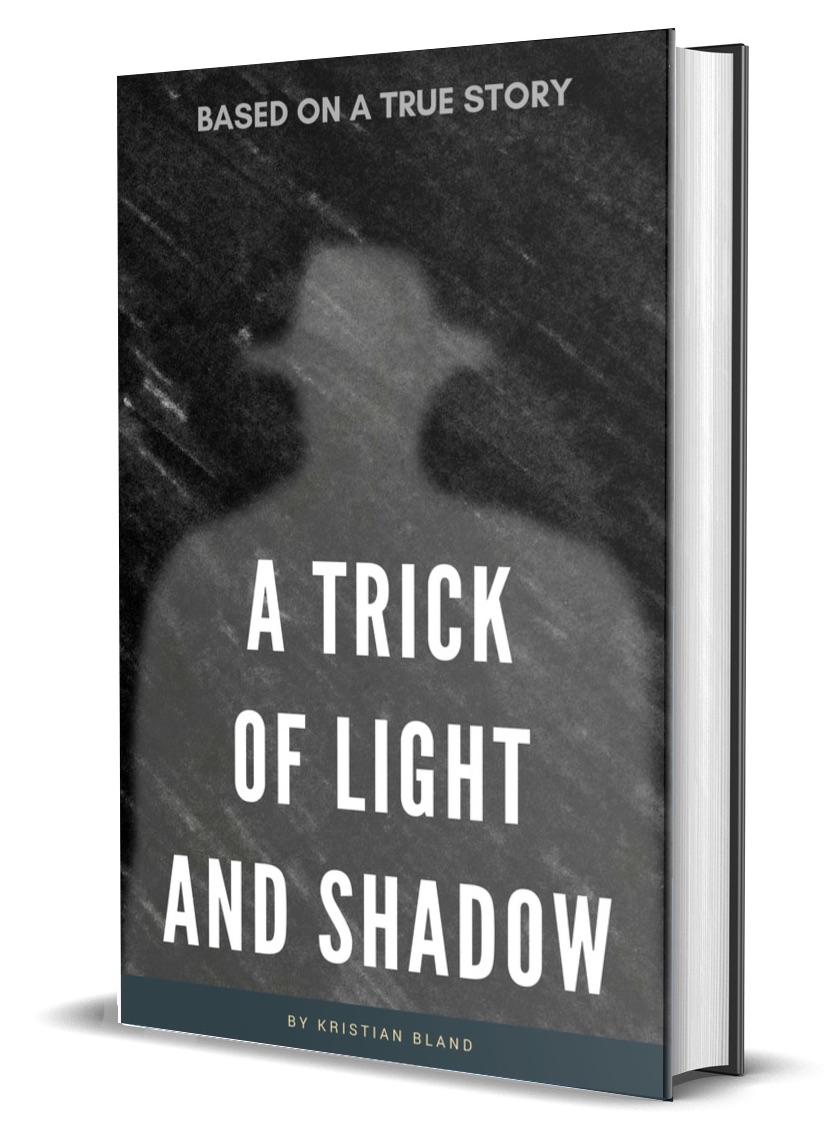
Kristian, the problem with your argument is that you’re dead wrong about how the “hardcore market was shrinking”. Had Ultima IX been released in the mid or late 2000s, you might have had a point. But 1999? No. That was the heyday of the unapologetically wordy and numerate Infinity Engine games, all of which sold considerably more copies than Ultima IX did. Yes, even Planescape: Torment sold more than Ultima IX did!
Ultima IX *should* have been more hardcore. It *wasn’t* what PC gamers were looking for in 1999. That Origin made it the way they did was a terrible and tragic misreading of their market. Period.
I’m not sure whether the amount of text in a game is the determining factor for what makes it “hardcore”, but by both that and the numbers standards, the Ultima series was never hardcore.
Ultimas had text, sure; but it was always succinct. They had numbers, but they were never the focus. Stat management and min/maxing were never part of an Ultima game, so I’m not clear on why you’re comparing the Infinity Engine games to Ultimas while faulting U9 for not being more like something none of the other games in the series were like.
But really, the definition of “hardcore” varies drastically depending on who you’re talking to and when. Even the Infinity Engine games are only hardcore when compared with today’s games, but compared to the cRPGs that preceded them, they were pretty forgiving, with a lot of mainstreaming conceits we’ve come to expect today.
In the end, it doesn’t really matter much. None of what I said about U9 hinges on the minor point of whether persons X or Y think it was hardcore enough. I only brought up the point because around 99 is when the mainstreaming trend was really beginning to take hold, because gaming was becoming less niche and more mainstream. Of course, nobody flipped a switch between binary states of “hardcore” and “mainstream” because it was a progression. But it was happening.
Thanks for the feedback, though. Ultima 9 is just one of those super divisive games, and you either like it or loathe it. I’m just one of the (admittedly) few that liked it, I guess.
Further comments here: http://ultimacodex.com/2015/11/in-defense-of-ultima-9/
Gotta disagree on several points. I was a huge Ultima fan, and one of U9’s staunchest defender leading up to and following its release. There was plenty of skepticism due to the complete retooling of what was originally shown prior to Ultima Online blowing up. But once the game was released? The sheer amount of hatred towards the game on both Usenet and the official U9 boards was staggering. So much so that EA simply shut down the message boards within a couple of weeks of the game’s release. Those of us that tried to defend the game were shouted down repeatedly.
“And those graphics? They hold up. Even today, they’re still pretty to look at, and more detailed than anything else out there at the time. Britannia wasn’t just a bunch of polygons on a tiny worldmap. It was alive with fluttering birds and skittering insects. There were trees and foliage. Things in caves went drip. It was entirely immersive, despite the limitations of the engine.
What else was doing what Ultima IX did in 1999? Nothing, that’s what.”
Good intentions do not make up for poor performance and slapdash development. I agree with your larger point, but just because the developers’ reach exceeded their grasp does not excuse a half-baked
game.
I understand that Origin’s hands were tied by EA. I understand that they shot for the moon, didn’t have nearly enough development time, and the game suffered as a result.
But that doesn’t make it a good game, or even a mediocre one. It’s simply bad, from start to finish.
I disagree that it was a de facto “bad” game. Maybe not the best Ultima, and definitely not the final installment the series deserved, but the game isn’t objectively bad.
Post-patching, of course. You’re absolutely right about the mess it was in upon release, and all of your points are valid.
I just ended up liking the (eventual) final product more than most people.